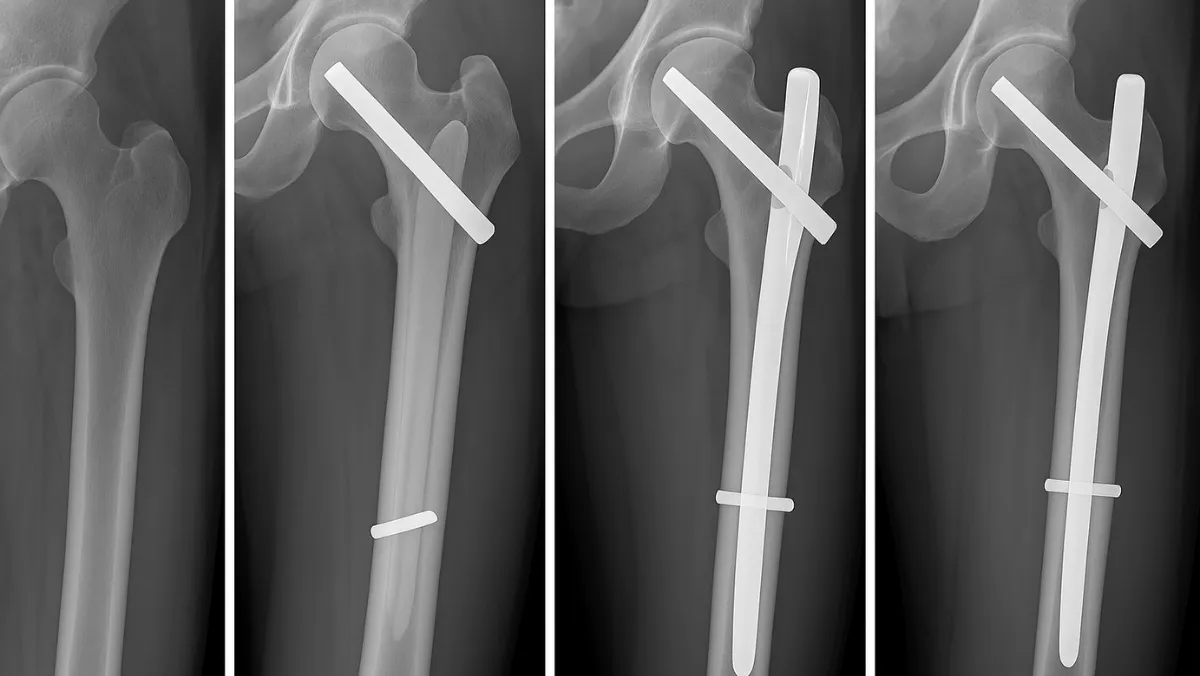
Safety Rate
Hip fractures are among the most serious injuries affecting mobility, particularly in older adults. One common type is the trochanteric fracture, which occurs in the upper part of the femur near the hip joint. These fractures often result from falls, accidents, or weakened bones due to osteoporosis. To restore stability and function, a procedure known as Proximal Femoral Nail (PFN) fixation is commonly performed. This modern surgical method provides strong fixation, encourages faster healing, and enables patients to regain mobility sooner compared to older techniques.
The trochanteric region of the femur consists of two bony prominences—the greater trochanter and the lesser trochanter—located near the hip joint. These areas are crucial for muscle attachment and hip stability. When fractured, patients often experience intense pain, swelling, and an inability to bear weight on the leg. Trochanteric fractures are especially common in elderly individuals with fragile bones but can also affect younger patients after high-impact injuries.
PFN fixation is a surgical procedure that stabilizes a trochanteric fracture using a specially designed implant known as a proximal femoral nail. This implant is a strong metal rod inserted into the central canal of the femur to hold the broken bone fragments together.
This method provides rigid internal fixation, making it possible for patients to start moving earlier than with traditional methods.
Recovery after PFN fixation emphasizes early mobilization to reduce complications and improve outcomes.
PFN fixation of trochanteric fracture is a reliable and effective surgical technique for treating fractures in the upper femur. By using a proximal femoral nail to stabilize the bone, this procedure restores hip stability, reduces recovery time, and allows patients to return to daily activities with greater confidence. Especially for elderly individuals, early mobility after PFN fixation plays a vital role in preventing complications and improving overall quality of life. With proper care and rehabilitation, most patients achieve excellent long-term outcomes following this advanced surgical treatment.
PFN (Proximal Femoral Nail) fixation is a surgical procedure used to treat fractures of the proximal femur, particularly intertrochanteric and subtrochanteric fractures. It involves inserting a metal nail into the femur’s marrow cavity, which is secured with screws to stabilize the bone. PFN fixation allows early mobilization, reduces complications, and helps in faster fracture healing compared to traditional methods.
The PFN method is a minimally invasive orthopedic technique where a specially designed intramedullary nail is inserted into the femur to stabilize fractures near the hip. The nail is locked with screws at the proximal and distal ends, providing strong internal support. This method maintains alignment, supports weight-bearing early, and minimizes soft tissue damage and blood loss during surgery.
PNF (Proprioceptive Neuromuscular Facilitation) is a rehabilitation technique used to improve flexibility, strength, and coordination. The four main types of PNF techniques are:
Hold-Relax – stretching the muscle, then isometric contraction, followed by further stretching.
Contract-Relax – contracting the muscle against resistance, then relaxing and stretching.
Hold-Relax with Agonist Contraction (HR-AC) – combining isometric hold and active movement of the opposing muscle.
Rhythmic Initiation – gradually moving from passive to active-assisted and then active movements to improve control and coordination.
Take the first step towards pain-free living. Book your consultation today and discover personalized treatment options tailored to your needs.